‘To the Linksland’ author revisits epic golfing pilgrimage three decades later
- Share on Facebook
- Share on Twitter
- Share by Email
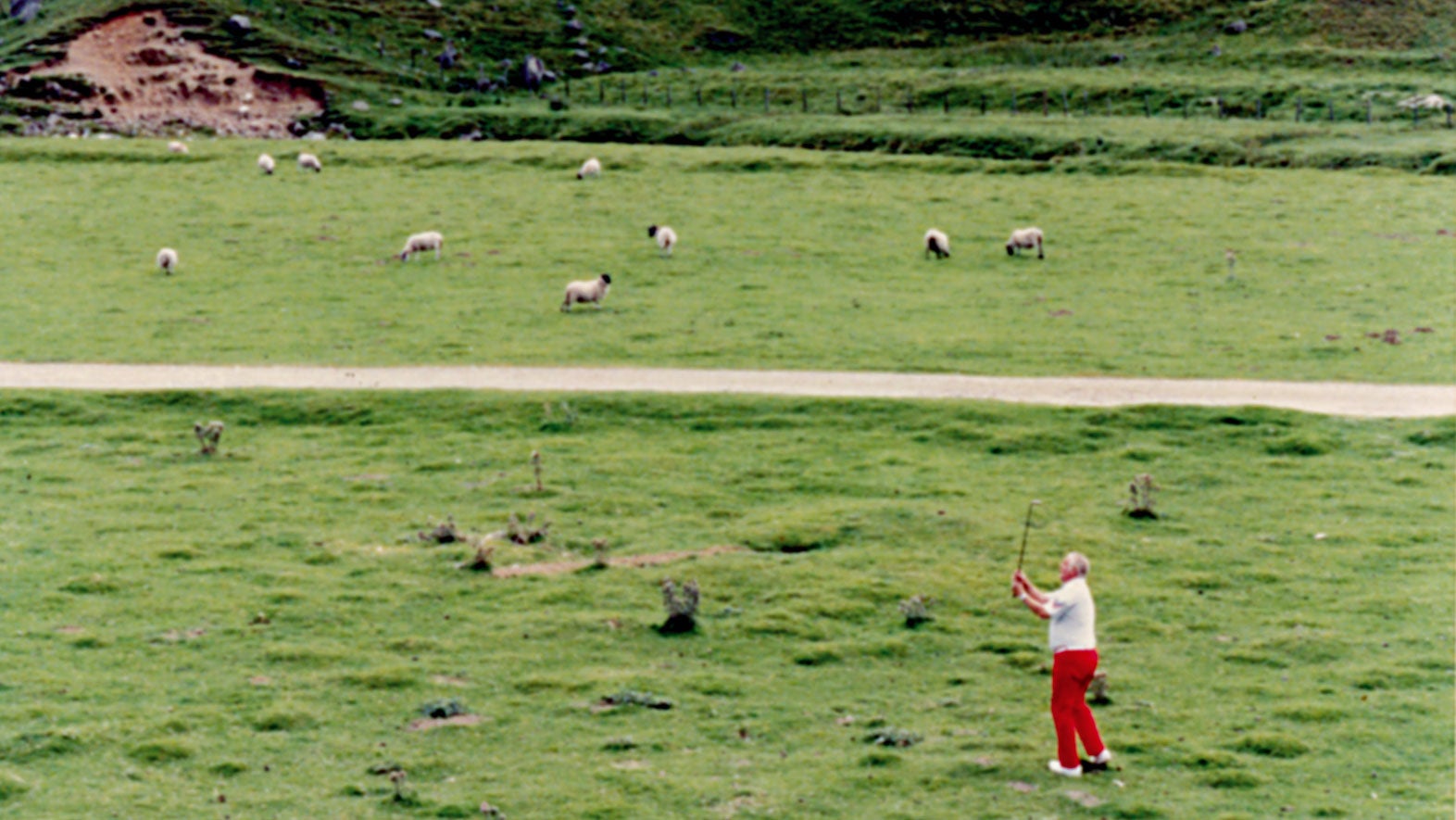
John Stark playing Auchnafree in the summer of 1991.
Michael Bamberger
Ed. note: More than three decades ago, Michael Bamberger, then a Philadelphia Inquirer sportswriter, and his wife, as newlyweds, decamped to the European Tour and eventually to Scotland, a pilgrimage that resulted in the now-beloved memoir “To the Linksland.” The book has exhibited staying power and remains a must-read for any golfer with a nose for exploration. This month, to commemorate the 30th anniversary of “To the Linksland,” Avid Reader Press/Simon & Schuster released a new edition of the book, which features an introduction by “Golf in the Kingdom” author Michael Murphy and, for the first time, photographs from the adventure. The new edition also includes an afterword by Bamberger, who today is a senior writer at GOLF.com and the host of our new interview series, GOLF Originals. With permission from the publisher, the afterword is reprinted here.
***
As a study in fair trade, this book fails miserably. I have heard from many of you, readers of this dressed-up golf guide, for 30 years now. Some of you have traversed the motherland, exploring various nicks and nooks, and reported your discoveries back to me. A joy, even when I worry you may put me out of business. Two former USGA presidents, not young but notably sturdy, found their way to the rugged six-hole course described in these pages. That is, Auchnafree, a primitive layout in a remote Scottish glen that is a paradise for sheep and fishermen. In post-journey letters, both gents made me feel like Admiral Byrd but the truth is that I got to Auchnafree only through the kindness of John Stark, my Scottish golf teacher, who decided to take me there. And Stark got to Auchnafree by way of a shepherd named John Pollock. There’s always a through line, a lifeline, something — another person’s outstretched hand.
What I’m trying to say is that you all have given me far more than I could ever give you. If you stop reading now, please go out with that.
I won’t offer up my usual tuition-payment quip here, although every bit does help. (I was surprised one day to receive a six-figure royalty payment from Tokyo, in yen, and was more surprised to see it convert to $372, something like that.) Our two kids had not seen the light of day when this book was first published. Now they’re long out of college. They did not become sportswriters, or golfers, at least not yet. It truly doesn’t matter. They have their own things. Golf is too hard to have it pushed on you. As for sportswriting—
My wife, Christine, and I stumbled onto our future daughter’s name (Alina) while I was covering spring-training baseball in Florida. We stumbled onto our future son’s name (Ian) a few years earlier, when we were newlyweds living on, and off, the European golf tour’s various riches. I dedicated this book, this account of our seven-month wedding trip, to “my adventuresome wife.” Does this new edition give me another crack at it? If so, I’m doing it again.
The comment I get most often about this book is along the lines of this: Your wife was willing to ride an all-night caddie bus across Europe? She was. And if Christine had another crack at it, she’d do it again. She has the wanderlust gene.
I have made some wonderful, sometimes unlikely, friends through this book, Michael Murphy among them. Mike’s “Golf in the Kingdom” is more than a book for me. It’s a magic trick.
I found it inspiring when I first read it, a few years after college, and all these years later it still inspires me. Michael Murphy is in his mid-nineties as I type this and, like his 1972 book, is ridiculously vibrant. He’s an inspiration every way to Sunday.
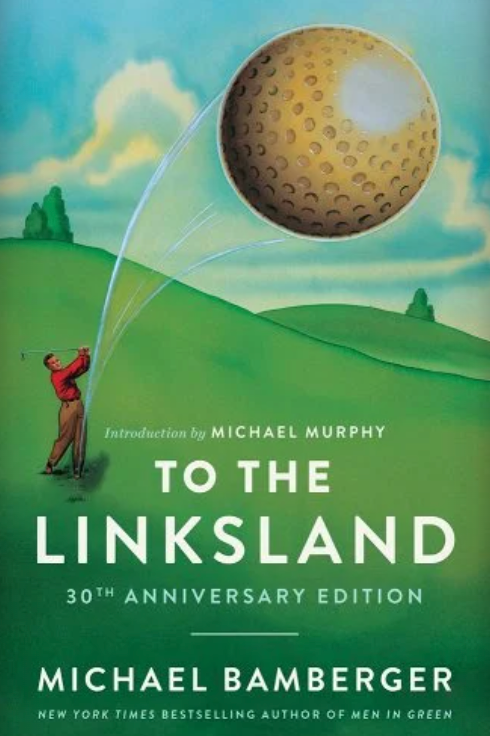
Mike’s book planted in me the idea of an American golfer going abroad and trying to solve various riddles about this old shepherds’ game and its devotees. Mike does something that would likely be useful for all golfers, and golf writers, to do. He stays in touch with his sense of mirth. Consider just the epigraph to “Golf in the Kingdom”: “The game was invented a billion years ago — don’t you remember?” You’re off to the races.
Now is a good time for me to steal that billion years theme. The accountants among you may observe that this 30th-anniversary edition was published 32 years after the first edition. O.K., yes — true. But does a couple years matter when you’re talking about a game that’s a billion years old?
My path to Murphy was through Al Silverman, my editor at Viking. Al was a legend at various paragraph factories who edited Saul Bellow and William Kennedy and had previously been the editor of Sport, a late and great American sporting monthly. In that role, Al oversaw the presentation of the 1962 World Series MVP award to the Yankee pitcher (and future professional golfer) Ralph Terry. Thirty years later, Al sent this book, as a manuscript, to Michael Murphy, asking if he might blurb for it. Mike did, generously. He also sent the book, in galleys, to various reviewers. (The Atlantic gave it a short write-up. The Atlantic!) He arranged for the book to be excerpted in not one but two issues of Golf Digest. Magazine excerpts were a big deal then because how else were you going to get the word out about a book nobody was waiting to read?
Al was my father’s age. He had an unhurried manner and an office filled with manuscripts secured with rubber bands. When he talked to you, he’d sometimes tuck his chin into the top of his black turtleneck. He got me together with Jerry Bauer, if that name from publishing’s yesteryear means anything to you. (Jerry was a photographer with a specialty in author photos.) As I look back at the experience of getting this book up and out, I realize this is my own version of “The Last Days of Disco,” if that name means anything to you. Al sent his kids to college on “I Am Third.” The TV version of it is called “Brian’s Song.” Everybody my age knows “Brian’s Song.” James Caan played Brian Piccolo and Billy Dee Williams played Gale Sayers. Al was a mensch.
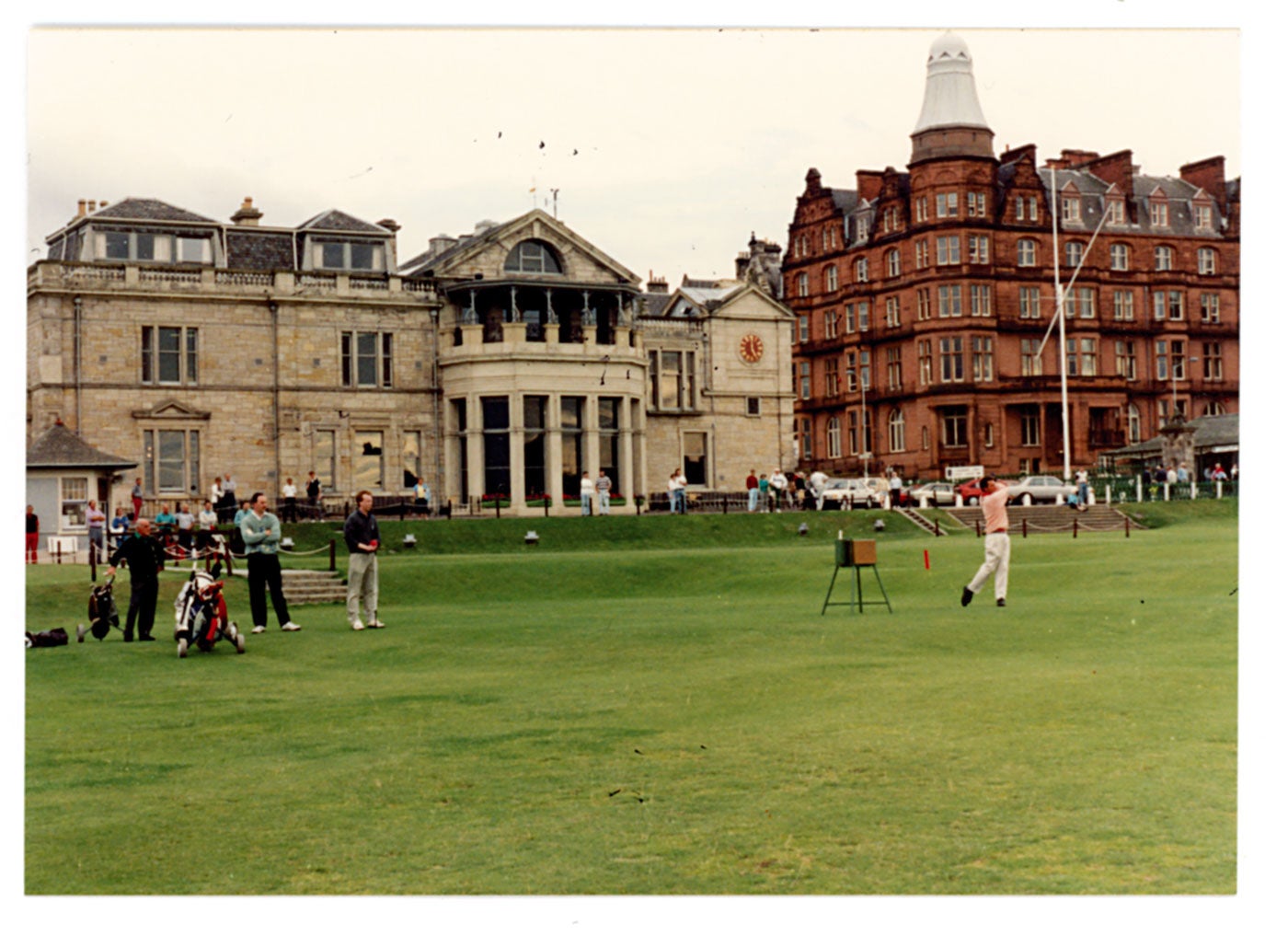
Back to Mike. Michael Murphy. (He once said to me, “How many police captains do you think have had that name?”) In the years since this book was first published I have had many good conversations and times with Mike, over meals, by phone, once at a new-agey writers’ seminar, on golf courses. At a U.S. Open at Pebble Beach we climbed up and down the grassy dunes of the celebrated links while talking about a make-believe threesome comprising Shivas Irons, Ben Hogan and Tiger Woods. Mike is out there, creative in every way, but also very, very grounded. (In his early fifties he could run a 4:30 mile. You don’t fall out of bed and do that.) My John Stark is Mike’s Shivas Irons, and Mike’s Burningbush is my Auchnafree. Or is his Burningbush my Machrihanish? I’m not sure.
The ch in those two lyrical names is the softest sort of guttural sound. Dornoch, the same. The Japanese translator of this book didn’t know what to do with the English spelling of the Hebrew word chai.
Mike once told me that “Golf in the Kingdom” and “To the Linksland” are both travel books. He also said golf is “tantric” for us both. That is, it marries heaven and earth. What other game can make that claim? Don’t tell me yoga. Yoga’s cool but it’s not a game.
When Christine and I returned to the United States from Scotland, in the fall of 1991, we stayed for several weeks with our close friends Bob Warner and Jeannie Hemphill and their young daughter, Annie, the flower girl at our wedding. They had a large old house in the Chestnut Hill section of Philadelphia with a big backyard that Bob mowed himself and not on a rider. We stayed on the third floor and that’s where I started writing this book. Annie is now a trauma surgeon and the fastest golfer I know.
The “man” in this book’s first sentence — I think the man liked my wife — was a caddie who worked for the Fijian golfer Vijay Singh, who then was in the late stages of his first act as a touring pro. Vijay’s career eventually landed him in the Champions Locker Room at Augusta National and in the World Golf Hall of Fame. Vijay and Peter Teravainen, the player I caddied for in Europe, played a lot of practice-round golf together, in part because Peter’s wife and Vijay’s wife were friends. My path to Vijay’s caddie, and thereby the first sentence of this book, was through Peter.
Vijay started playing in the United States in the early 1990s and for decades after that I would see him a few times a year. He was often difficult with reporters and blew us off regularly, sometimes even after good rounds. Now and again, though, I could get Vijay alone and he’d give me a little something. We always started our conversations with Peter. Those interviews, if I drill into this arcane subject at all, are really a tribute to Peter, and to Ardena Singh’s friendship with Peter’s wife, Veronica.
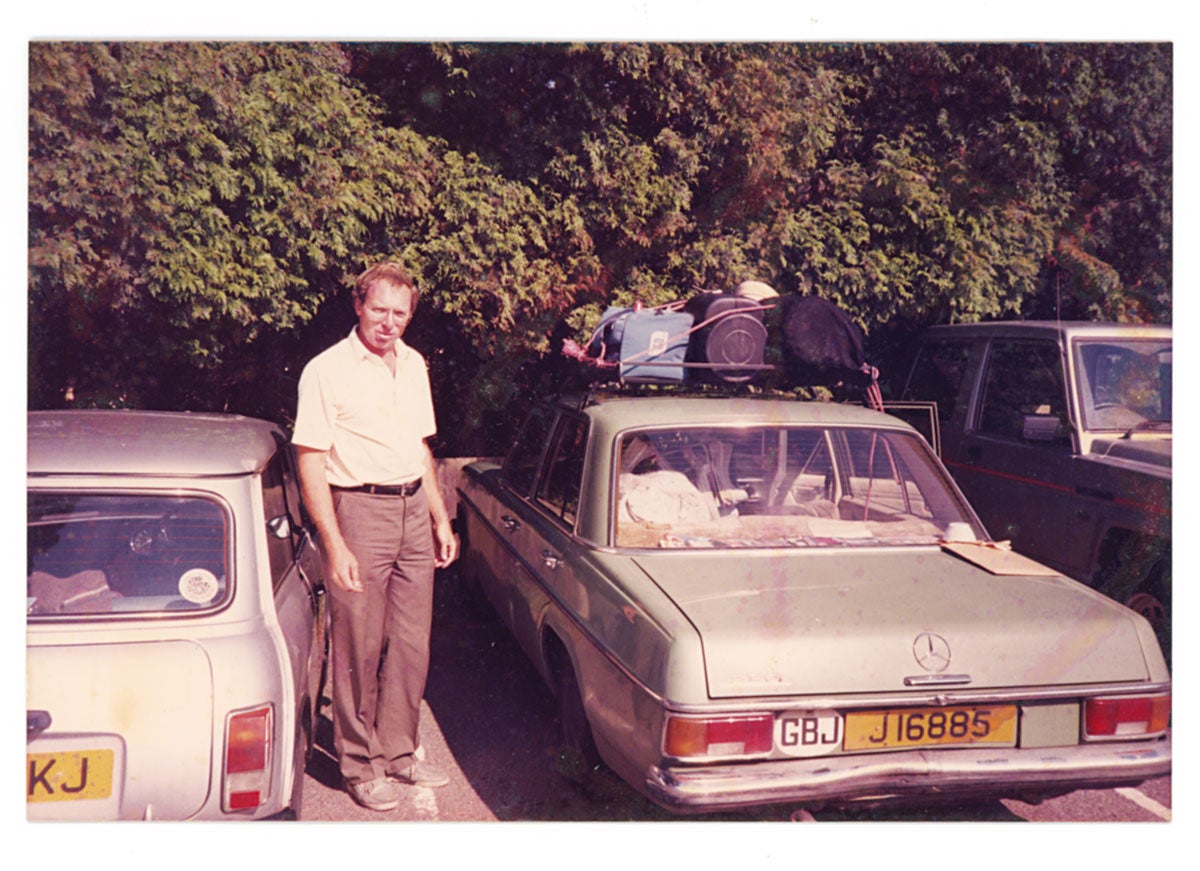
Professional golf, beyond the playing of the game, is all about relationships. At least, it is in this book. Actually, you can omit professional and that sentence still holds up: golf is all about relationships. Long before there were apps for like-minded people to meet, there was golf. Poke around the life and times of any golfer and you’ll find proof of that.
Christine and I, on our honeymoon golfing adventure, shared a cabin on an overnight train from France to Spain with the English golfer Steve Bottomley and his caddie-brother, Ian. We talked well into the night that night and for some years after it. A half-decade after that train ride, Bottomley finished a shot out of the John Daly-Constantino Rocca playoff at the 1995 British Open at St. Andrews. One lousy stroke. The only major he ever made the cut in. It almost doesn’t seem possible. Michael Murphy has a whole thing about “peak experiences.”
By the way, even though this is far more than an aside, the power of one-shot-out-of-the-playoff rests on a single thing, our faith in the scores. That is, our acceptance that every last shot has been played strictly by the rules. I don’t know how anyone could think otherwise. Peter’s commitment to the rules was absolute.
While caddying for Peter, I logged a number of rounds beside an English caddie named Alistair Matheson, known in better caddie yards as Squirrel. Squirrel caddied for Geoff Ogilvy when Ogilvy won the U.S. Open at Winged Foot. Squirrel raised casualness to an artform, and still does. He is famously droll.
Once, while caddying for Ogilvy at the Los Angeles Open, Squirrel’s cellphone rang. In a tournament round! That never happens. They were on the 11th tee at Riviera and Ogilvy was over his ball when the phone went off.
The Australian golfer had just made a mess of Riviera’s short par-4 10th, where he had hit driver in a misguided attempt to drive the green. Squirrel would have preferred a layup shot with a 3-iron.
Squirrel answered the ringing phone and had a muffled conversation within earshot of his boss and scores of spectators ringing the 11th tee.
“Who was that, anyhow,” Ogilvy said to his caddie after he played his tee shot.
“It was my mum,” Squirrel said. “She said no one should hit driver on the 10th at Riviera.”
OMG. This golf.
“It was my mum,” Squirrel said. “She said no one should hit driver on the 10th at Riviera.”
I’ve seen Squirrel, here and there, for years. Working for Geoff Ogilvy and Adam Scott and others, Squirrel has won tournaments and had many top-10s. Of course, he’s missed a bunch of cuts, too. He been hired and fired and rehired. All the while, he was droll. Always, always, always. Golf has produced a rich variety of characters. As Nixon was a gift to impersonators, golf is a gift to sportswriters. Squirrel.
Peter Teravainen and I have been pen pals a long time, first by airmail, later by email. Peter grew up in Duxbury, Mass., and has lived most of his adult life in Singapore, where Veronica is from and where they raised their daughter. In recent years, Peter has become an informal, pro bono matchmaker for under-the-radar Asian golfers and various American universities with under-the-radar golf teams.
Peter went to Yale where he majored in economics and he can read a Fortune Brands annual report like a child can read “The Cat in the Hat.” He is also uniquely expressive. He’s incisive and precise. In 1995, after a long stretch of missed cuts, Peter won the Czech Open and $200,000 and said, “Now I’m up to broke.” I trot out those five words often because they uncover the essence of the professional golf experience: You do what you can to stay in the game.
That’s the desperate spirit that drew me to professional golf as a teenager, when I caddied in my first professional events. That spirit was alive and well in Peter. It drove Peter as it drove our mutual friend Mike Donald. Also Arnold Palmer and Raymond Floyd and Lucas Glover and a thousand others. Pro golf as a circus, as a carnival. As a thing in your blood.
Every year, usually in November, I host a casual golf tournament in Philadelphia for a small group of golf-nut friends that is named for Shivas Irons. One year I sent an invitation to Peter, not knowing if he was in Singapore or visiting home, in Duxbury. He was in Singapore. Peter wrote back, “I am honored to be invited to the Shivas Invitational. That would be the only tournament that could possibly entice me out of retirement.”
He then described a single and near-perfect shot he had recently hit in a narrow allée formed by rows of blueberry bushes on his parents’ property. His target, he wrote, was the center of a small trampoline. His club, he wrote, was an old Dunlop wedge. His ball, he wrote, was a balata Titleist 90. His shot, he wrote, was the third in a series. Third and last. If you can end on near-perfect, end on it.
John Stark, my Scottish golf mentor, knew a lot about Peter. Also Seve Ballesteros, Steve Bottomley, Constantino Rocca, Ben Hogan and Jack Nicklaus and Tom Watson. He followed professional golf closely. For Stark, tournament golf and its vagabond life was a grand case of what could have been, but he had no regrets. He devoted himself to other people’s golf, and for years he was the pro at Crieff Golf Club, teaching the game to many people, I among them, who wanted to learn the old, spirited Scottish form of it and could find their way to his heart-of-Scotland town. Where would the game be without people like John Stark?
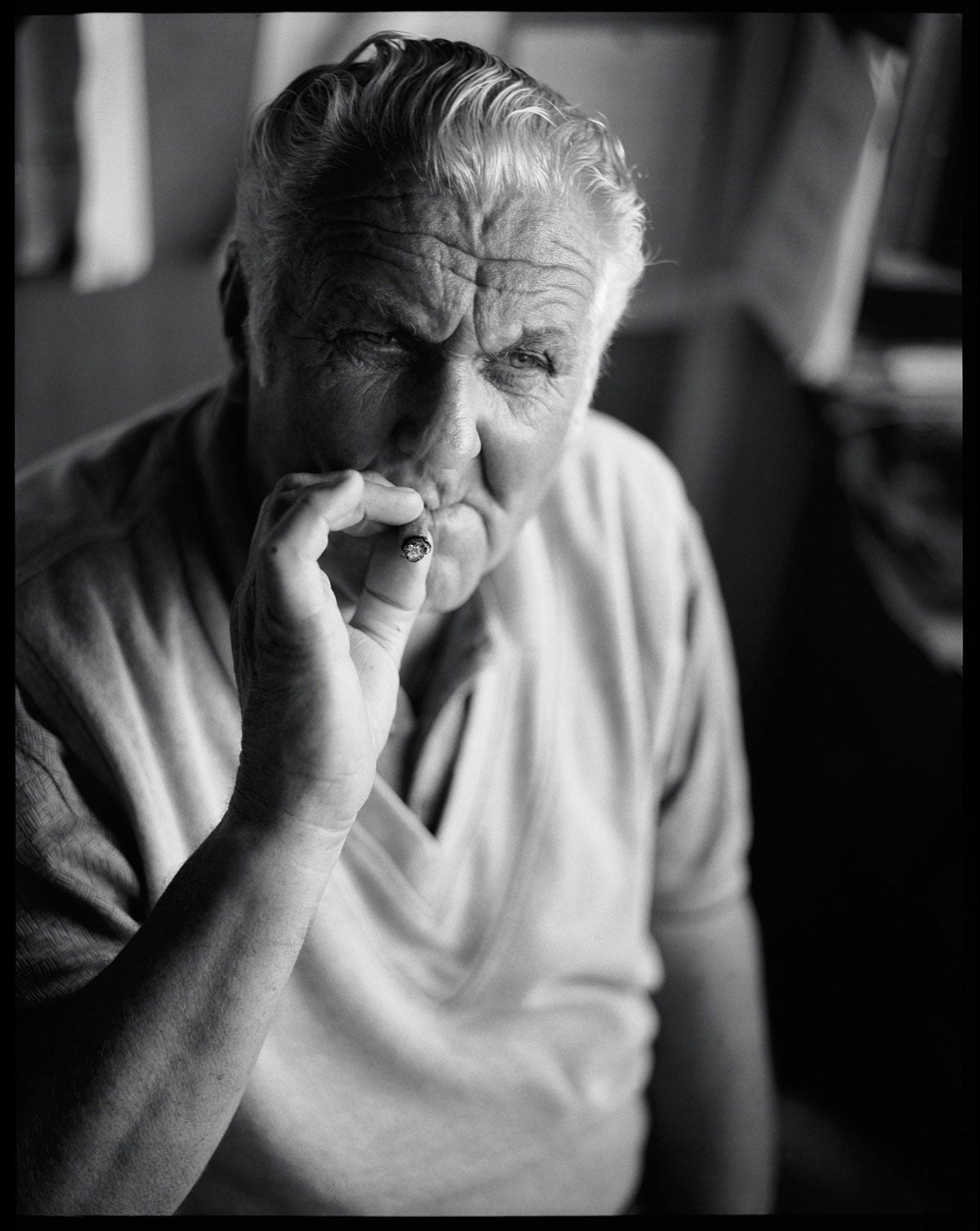
One spring day in 2008 an unexpected package arrived at our home in Philadelphia, a slender black golf bag sent by a reader stenciled with the words On ye go. One of Stark’s phrases. I went to a driving range that day and started hitting balls with Stark and his aphorisms in mind. (One of his things was to suggest I focus on the sound the shaft makes, whirring through the air, during the swing.) I returned home from the range to the news, by phone, that John Stark had died. He was 76. This is the final paragraph of his obituary in the great Scottish broadsheet “The Herald”: “John was intelligent, smart and could probably have been successful in any profession he chose. Many have cause to be grateful he chose the world of golf.”
This next bit seems beyond unlikely. Roger Angell (a pal through baseball and some other things) alerted John Updike to the existence of this book. Updike liked some of Stark’s instruction and applied it to his own game. He invited me (by way of a hand-typed letter) to join him for golf at his home club, Myopia Hunt, in South Hamilton, Mass. Our afternoon together, and its aftermath, has informed the rest of my life.
Some weeks after our game, I received a letter from Updike with our small, yellow, charming Myopia Hunt scorecard in it. He wrote:
Your spirit continues to haunt Myopia. I was admiring an especially racy Jaguar the other day, with Florida plates, parked in the driveway, and what do I see on the back sill through the rearview window but a well-thumbed, sun-faded copy of “To the Linksland.”
I am trying to clean off my desk and found this card of our round. I can’t imagine how I won all those little dots; I’ve been playing like a klutz lately.
Wait, I now see that we were a team, and it was you who was winning a lot of those little dots, like with an amazing 3 on 10.
Hope your summer swims along in the sun.
Best wishes,
John
Please forgive my immodest oversharing here but I think there’s a playing lesson in it for all of us, courtesy of Mr. Updike, a lithe 95-shooter: If you can be generous, be generous. You might improve another person’s life.
John Stark, John Updike. Thank you, thank you, thank you.
I have made three trips to Auchnafree, the first two of them led by Stark. Our first time there we hiked all around the pastureland course with its natural bunkers, formed by sheep. From some of its elevated tees, you could see the nearby River Almond, closer to silver than gray. Stark talked some about John Pollock, his shepherd friend who had died a year earlier. Pollock had not only laid out the course, he was its head greenkeeper, aided by a flock of free-range sheep. Stark described how he and his friends would gather every year for an event called the Auchnafree Open. They would play golf, fish the Almond for salmon, light a fire, and use the river as a source for their whiskies and water.
Thirteen years after that visit, Stark and I returned to Auchnafree. The course had grown in. The actual holes, made from tin cans, were still there, as well as the short, weather-beaten flagsticks, but the course was even more rugged than it had been in ‘91. Stark used a fairway wood as a walking stick.
In the summer of ’22 Christine and I toured Auchnafree and I saw no hint of the holes at all, amid the glen’s 12,000 untamed acres. I hiked around, looking for the boulder, the tribute to John Pollock, that Stark had shown me on our first visit, more than thirty years earlier. I searched and searched but couldn’t find it. Life’s not tidy, no matter how much we might pretend otherwise.
I have also made three trips to Machrihanish. Summer of ’91, with Christine. Summer of 2005, with my friend John Garrity. And in the summer of ’22, alone. That is, I arrived alone. I played golf with various locals including a gent named Tommy Blue, my age exactly, a retired roofer who has spent all his life in and around Machrihanish.
Machrihanish is a coastal village. It has a few farms and houses, the sublime, duney seaside course, a modern and airy clubhouse, and not much more. It’s located on the Mull of Kintyre, a peninsula that dangles off southwestern Scotland amid a mishmash of isles and lochs. Paul and Linda McCartney had a farm in Machrihanish and when Tommy Blue was 17 he was recruited to play bass drum on a song called “Mull of Kintyre” that Paul and Linda, along with various bandmates from Wings, recorded on their farm. I mentioned the song once to Nick Faldo and he started singing it. He knew its every note. He knew the Machrihanish course only by reputation. That’s how most people know it.

On my last day at Machrihanish, on my third trip there, I had a conversation with the club’s assistant greenkeeper, Simon Freeman, a golfing lifer if ever there was one, with sideburns he borrowed from a portrait of Robbie Burns. Simon told me he grew up playing the Crieff course, the place where I first saw Stark. What a small world. His family home was beside the course’s parking lot.
“Did you know John Stark?” I asked.
“I knew him well,” Simon said. “Everybody knew John Stark. I got rode out regularly by him.” That is, chased off while practicing in a Crieff fairway.
“Did you ever play Auchnafree?”
“Oh, aye.” Once, as a teenager, Simon had played in the Auchnafree Open.
“Did you ever know John Pollock?”
“Very well. My father and John were great pals. They grew up together. They played a lot of golf together.”
They played a lot of golf together.
A tidy sentence. A tidy sentence and a pleasing thought.
What are the chances? What are the chances of bumping into another person who knew this obscure, grown-in course and the shepherd who laid it out?
I’m starting to realize that golf is a village, and golfers villagers.
We talked a bit about John Pollock.
“John drowned in the River Almond,” Simon said. “He was trying to save a sheep.”
What a way for a shepherd to go. Auchnafree, the course, was not the same without John Pollock. Neither was the glen.
Anyway, you can find your own Auchnafree. I’m not sure of much but I am sure of that.
Philadelphia
September 2023
Michael Bamberger welcomes your comments at michael.bamberger@golf.com
Latest In News

Michael Bamberger
Golf.com Contributor
Michael Bamberger writes for GOLF Magazine and GOLF.com. Before that, he spent nearly 23 years as senior writer for Sports Illustrated. After college, he worked as a newspaper reporter, first for the (Martha’s) Vineyard Gazette, later for The Philadelphia Inquirer. He has written a variety of books about golf and other subjects, the most recent of which is The Second Life of Tiger Woods. His magazine work has been featured in multiple editions of The Best American Sports Writing. He holds a U.S. patent on The E-Club, a utility golf club. In 2016, he was given the Donald Ross Award by the American Society of Golf Course Architects, the organization’s highest honor.
